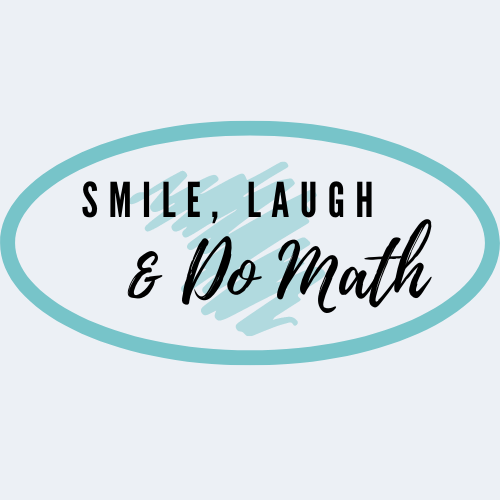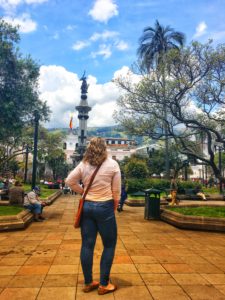The past few years have really changed the course and direction of so many aspects of our lives. COVID turned us all on our heads and threw a wrench into just about everything. It challenged us all, pushed us to our limits and made us question each and every action we took. It was hard. It still is hard. My math classroom is not the same it was before. I’m not the same person nor are my students and so therefore I find myself unable to continue with the same methods of teaching that I used before March 2020. There are many negative aspects that were produced and it’s easy to spiral down that pathway of negativity. But what about the positives? I saw some students excel in virtual school, I witnessed students learn how to maneuver technology effortlessly and I myself was forced to change my own teaching practices. 21st-century literacy skills became critical as well as the need for students to show conceptual understanding rather than just memorizing and regurgitating or relying on apps like photo math from the comforts of their bedroom.
So after a year and a half of virtual and hybrid school what do we do now? What have we as teachers learned? How have our teaching practices changed?

My COVID teaching Experience
I teach at a private, bilingual school in Quito, Ecuador. COVID hit us really hard and so we spent from March 2020 through the 2020 – 2021 school year virtual. Our world was thrown upside down and we very quickly had to figure out how to teach through a computer. In September 2021 we went back to school in a hybrid model with half the students at school and the other half connected via computer. This was another game-changer where students and teachers had to quickly adapt and learn how to navigate a new school modality. This only lasted 2 months and at the end of October, everyone returned to campus 100% each and every day. Oddly enough this felt like a whole new world, one that I was now no longer accustomed to. The students came back and even though it felt similar to the past, prior to COVID we had all changed, including math education. We are now a 1 to 1 middle school where all students have access to technology each and every day. Before this was not the case. We had laptop and iPad carts that could be reserved but the majority of our work was done on paper. Another change I’ve seen is that virtual school taught us just how easy it is for students to cheat. Whether it was students sharing answers with others, students using apps like Photo Math or other online resources, students were not demonstrating learning on traditional assessments. My student’s learning was constantly at risk due to their ability to find the answers rather than to think themselves. Traditional activities, lessons and practice problems were just not cutting it. I needed to find different ways to assess my students learning in order to deter them from finding answers from others.
Even though I live abroad I don’t think I’m alone in my virtual school experiences. I think many math teachers, around the world, are now feeling the repercussions from a year of calculators, math apps and the sharing of answers. So what has COVID taught us about math education? Are rules, formulas, memorization, skill, and drill what students really need? Prior to COVID, a handful of teachers saw the power and importance of conceptual understanding and teaching but as we move into 2022 I think many more of us have jumped on the bandwagon. Rather than asking students to simply compute and memorize it is critical that students understand the whys, the hows and conceptualize mathematics if they are going to be ready for a world that is rapidly changing. In this post, I will share some of my favorite resources to help build problem-solving, strategic thinking and deep understanding in your math classroom.

Why?
That’s the question I now strive to have my students be able to answer with each new topic and concept we study. My goal is that students are able to see the connections between things they’ve learned previously and are able to continue to build on their knowledge and use it in the future. We can’t tell the future and don’t know what it will look like in 10 + years from now but I’d be willing to bet that we’ll still have computers and calculators. Probably faster and smarter ones and so this eliminates the need for human calculators, a concept that was quite common 70 years ago. Therefore our previous practices of lecture, practice and produce on a test may not be setting students up for success in the future. We need to allow and guide students to explore, discover, formulate their own ideas and make connections with mathematics.
But How?
I find the most important part of fostering a conceptual understanding is allowing students time to explore PRIOR to any explicit teaching or explaining. This allows students to develop their OWN methods and make their OWN connections. When prepping and planning the introduction to a new topic or skill I try and ask myself these questions:
- Is there a visual simulation or pattern that demonstrates or links to the topic?
- What prior knowledge do my students have that may connect to this topic?
- How can I guide my students to developing the concept themselves?
- Are there any manipulatives I can use to show how the concept works?
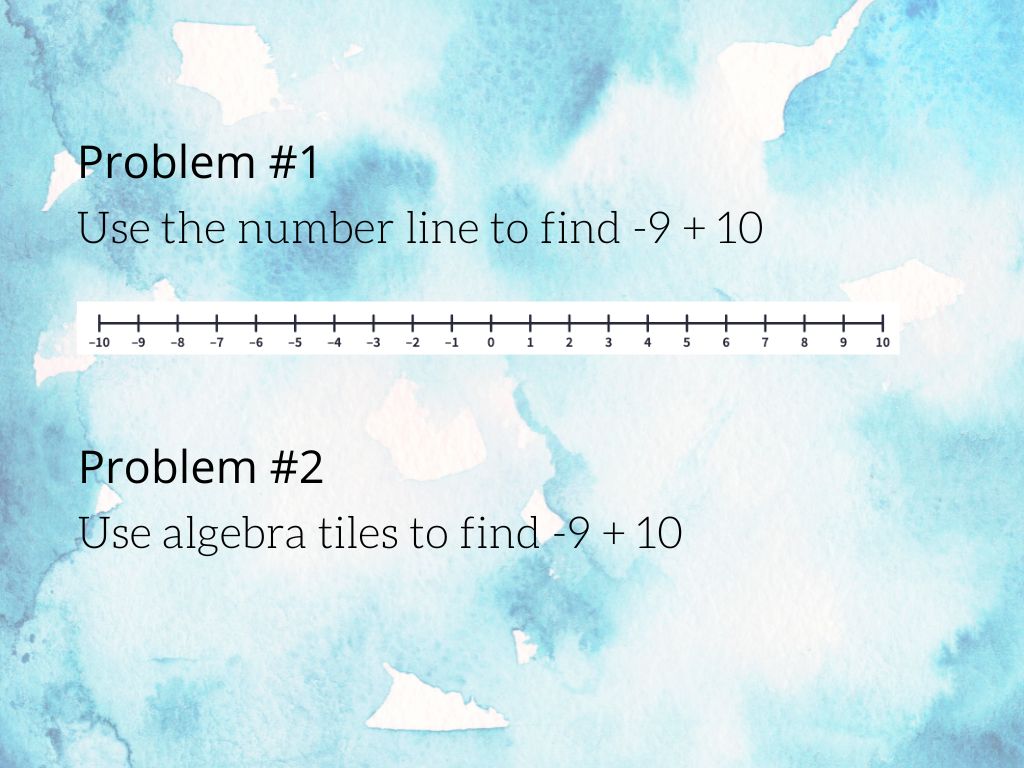
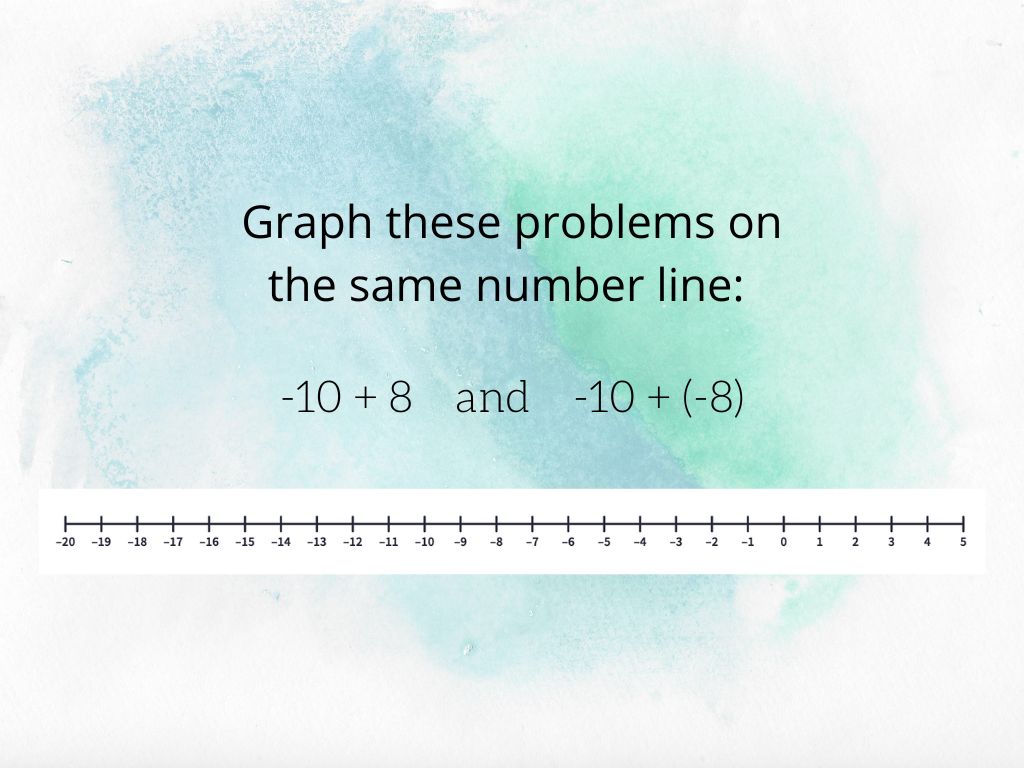
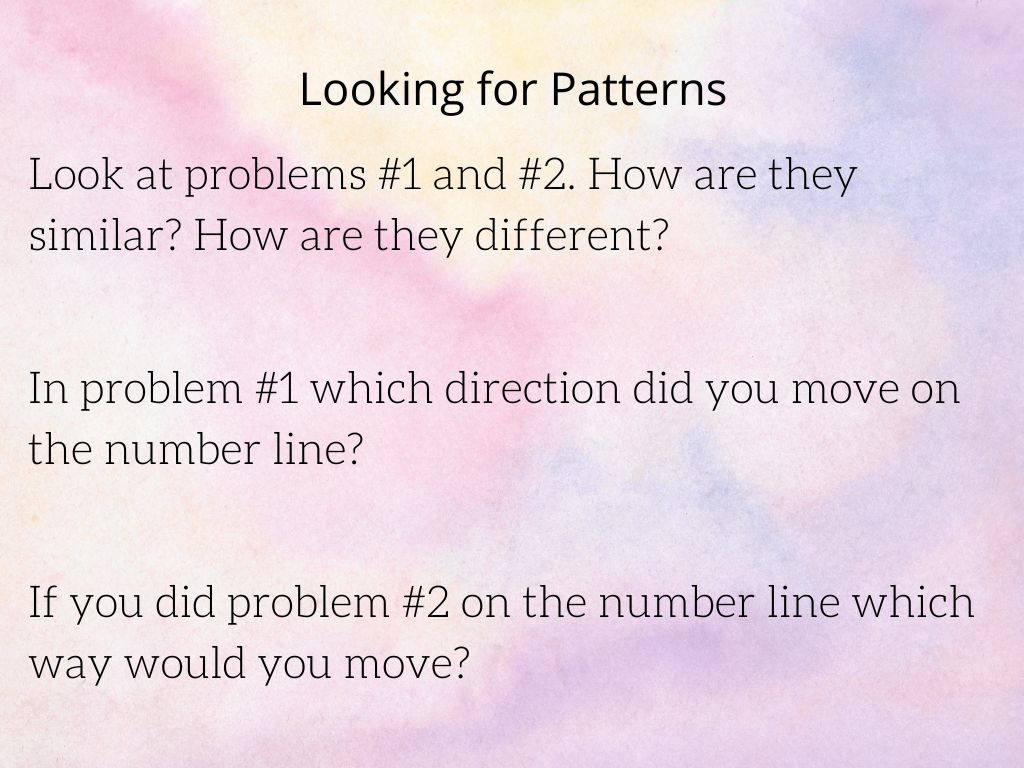
Above is how I introduced adding and subtracting integers. I didn’t provide students with the traditional “rules” but rather built upon their prior knowledge of adding and subtracting, using a number line as well as their understanding of opposites. I continuously used the phrases “adding (or subtracting) an opposite” and asked students which way do we move on the number line if we are “adding an opposite” or “subtracting an opposite”. I never once taught students rules such as adding or subtracting and keeping the sign of the bigger number. I wanted students to understand how to add and subtract using the number line, a manipulative they’ve seen since elementary school and something they are familiar with. We continuously practiced and built upon their knowledge and eventually, the students were able to create and develop their own algorithms for integer addition and subtraction.
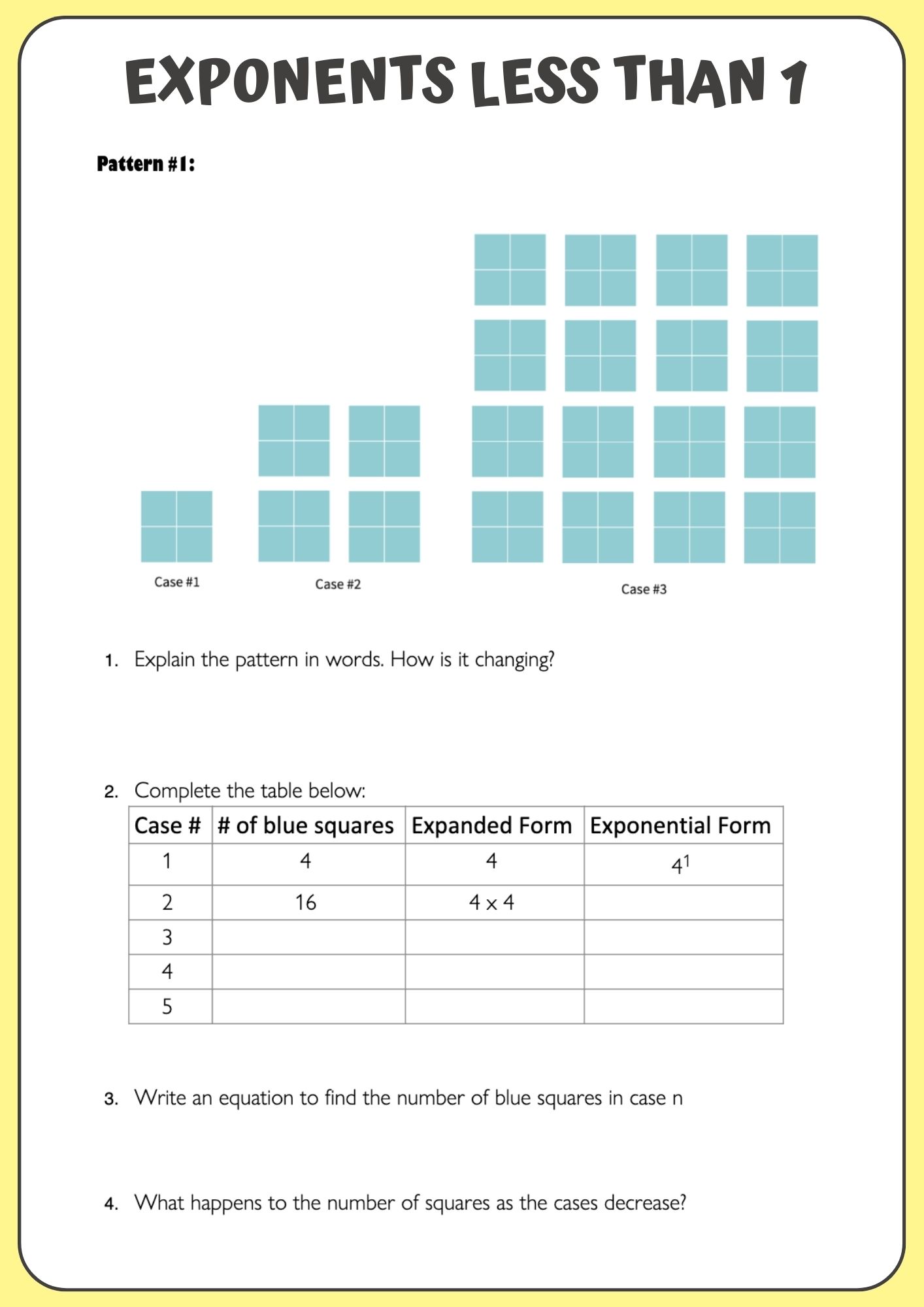
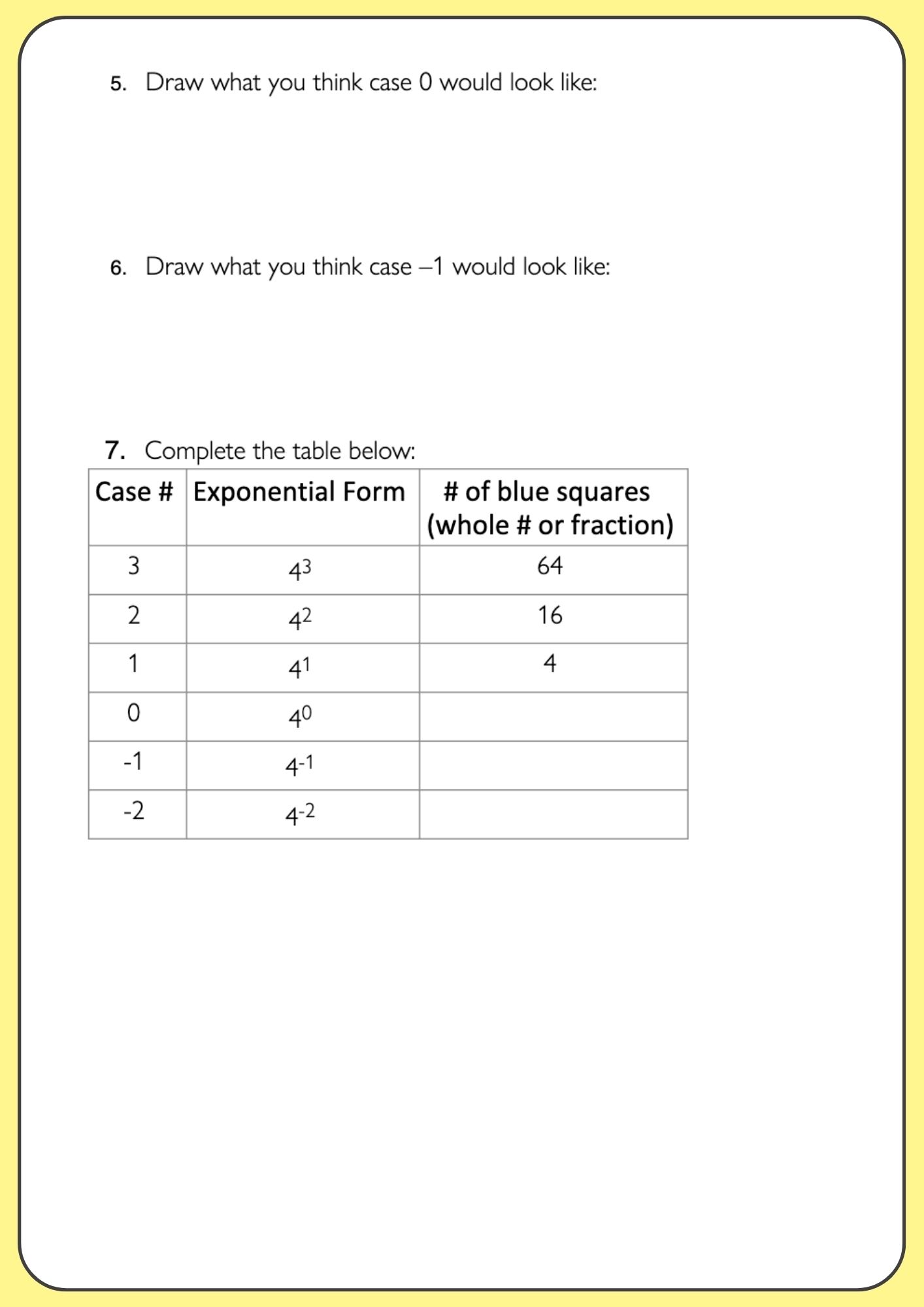
With my 8th graders, we just finished a unit on exponent rules. These “rules” though, were developed and created by the students. Above is a pattern and a set of questions I used to introduce and develop student understanding of exponents less than 1. We looked at a variety of patterns and together we formed the algorithm for evaluating negative exponents.
You’re not alone
It might seem like a daunting task to make such a big overhaul. But so did virtual school…. and hybrid …. and coming back to school with biosecurity measures. We’ve managed to adapt and change so much in the last year and a half but unfortunately, I think that’s just the beginning. We are now faced with a new outlook on education and how we teach math. COVID has provided us with the push to make changes that some had been fighting for many years prior. Conceptual learning and teaching is now a must, it’s no longer a choice. Students deserve and will need to understand mathematics on a deeper level as our society and world change at such a rapid pace. But know that you are NOT alone. We are all in this together (please tell me you sang that).
Talk with colleagues, reach out to teachers on social media and use the internet to your advantage. I’ve stumbled upon a number of free, ready-made resources that provide rich tasks that require students to think, problem-solve and view mathematics in a different light. My three current favorites are:
- Make Math Moments – A community of like-minded educators as well as free and paid resources to help bring creativity, spark curiosity and build problem-solving skills in the math classroom.
- YouCubed – This website is a gold mine! It is full of tasks for all age groups, PD opportunities and other goodies that support math teachers in their quest to move away from traditional practices.
- NRICH – This is another great resource that provides puzzles, activities, lessons and much more for all learners from elementary to secondary.
Let’s chat! Please find me on Instagram (@smilelaugh_and_domath) and let me know your ideas, thoughts and opinions on conceptual math learning and teaching. This is a topic that is very near and dear to my heart and I’m always looking to better my own practices!
